In recent years, virtual reality (VR) headsets have transitioned from niche gadgets to essential tools across various sectors, signaling a significant leap in how digital content is experienced. These devices offer immersive experiences that go beyond traditional screens, allowing users to step into three-dimensional environments for gaming, professional training, and collaborative projects. The evolution of VR technology has not only enhanced entertainment but has also opened new avenues for innovation in education, design, and remote communication, making it a valuable addition to any technology portfolio. As VR continues to break ground, understanding its capabilities and the range of available options becomes crucial for making informed purchasing decisions that align with organizational needs and customer demands.
Table of Contents
1. Exploring VR headset varieties and their applications
2. Insights into the 2024 VR headset market
3. Criteria for selecting VR headsets
4. Spotlight on leading VR headset models of 2024
5. Conclusion
Exploring VR headset varieties and their applications
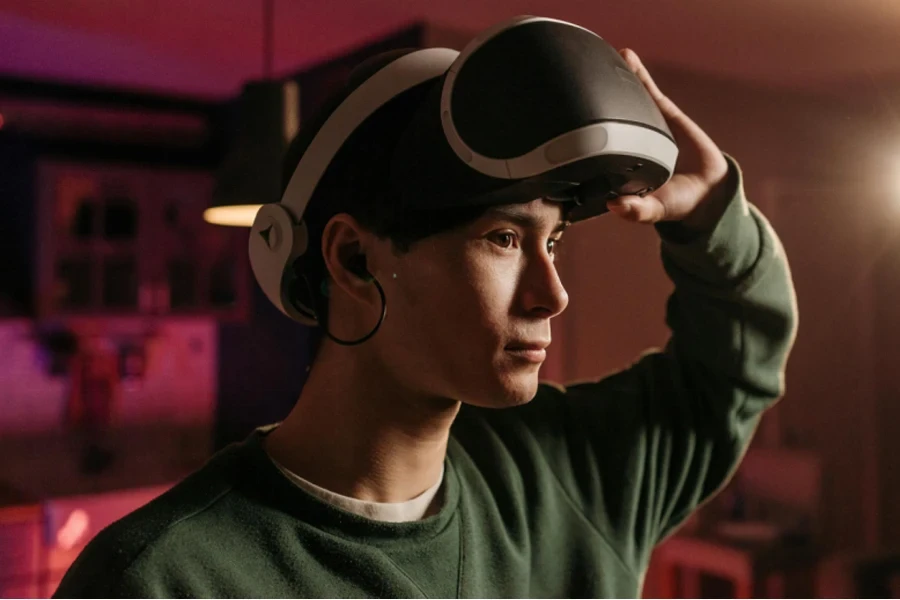
The virtual reality headset market is divided primarily into two distinct categories: standalone and tethered. Each category offers unique benefits tailored to different usage scenarios and user preferences.
Standalone vs. tethered: Understanding the differences
Standalone VR Headsets: Standalone VR headsets represent a leap towards democratizing virtual reality by eliminating the need for external devices. These headsets are self-contained units that incorporate all necessary components—processor, display, battery, and sensors—within a single device. The Meta Quest series exemplifies the standalone VR headset’s appeal, combining ease of use with the flexibility to operate anywhere without the encumbrance of wires or the requirement of a powerful PC. This autonomy allows for immediate immersion into virtual environments, making standalone headsets particularly attractive to those seeking convenient, ready-to-use VR experiences.
The allure of standalone VR headsets lies not just in their portability but also in their increasingly competitive performance capabilities. Advances in mobile processing technology have enabled these devices to offer compelling, immersive experiences that continue to narrow the gap with their tethered counterparts. The ease of setup, combined with a growing library of content designed to leverage their wireless nature, underscores the standalone headset’s role in expanding VR’s accessibility and adoption across a broader audience.
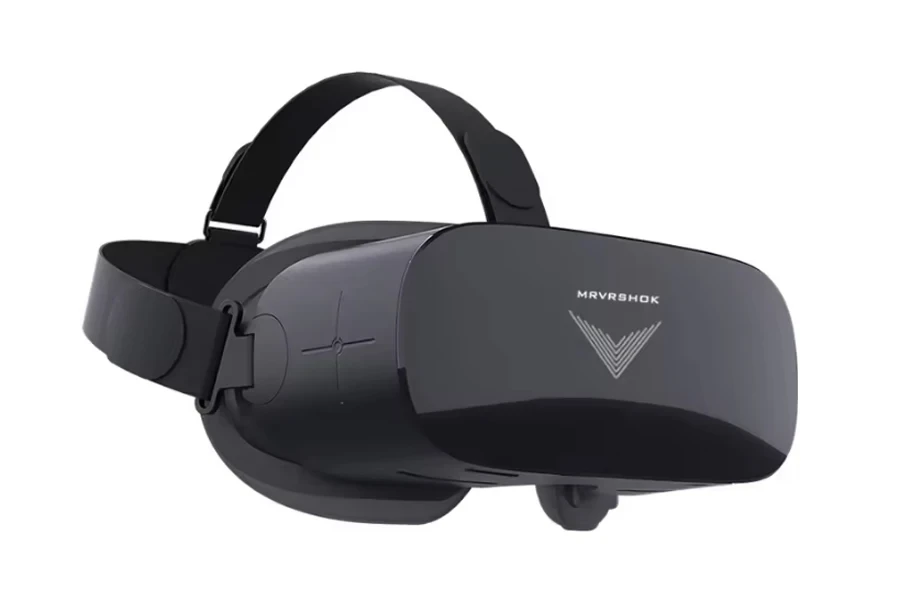
Tethered VR Headsets: In contrast, tethered VR headsets require a physical connection to an external computer or gaming console to function. This dependence on external hardware is both a limitation and a strength. Devices such as the Valve Index and HTC Vive Pro 2 draw on the considerable processing power of gaming PCs to deliver detailed, graphically intensive virtual realities that standalone headsets cannot match. The tethered setup supports richer textures, more complex environments, and higher frame rates, contributing to deeply immersive and visually stunning VR experiences.
The requirement for external hardware means tethered headsets are less flexible and more setup-intensive than their standalone counterparts. The presence of cables can restrict movement, although advancements in accessory options, such as wireless adapters, have begun to mitigate this issue. Despite these constraints, the superior performance of tethered headsets appeals to enthusiasts and professionals who prioritize the highest fidelity VR experience over convenience. For applications where detail and visual quality are paramount—such as professional simulation training, architectural visualization, and high-end gaming—the tethered VR headset remains the unmatched choice.
Applications across sectors
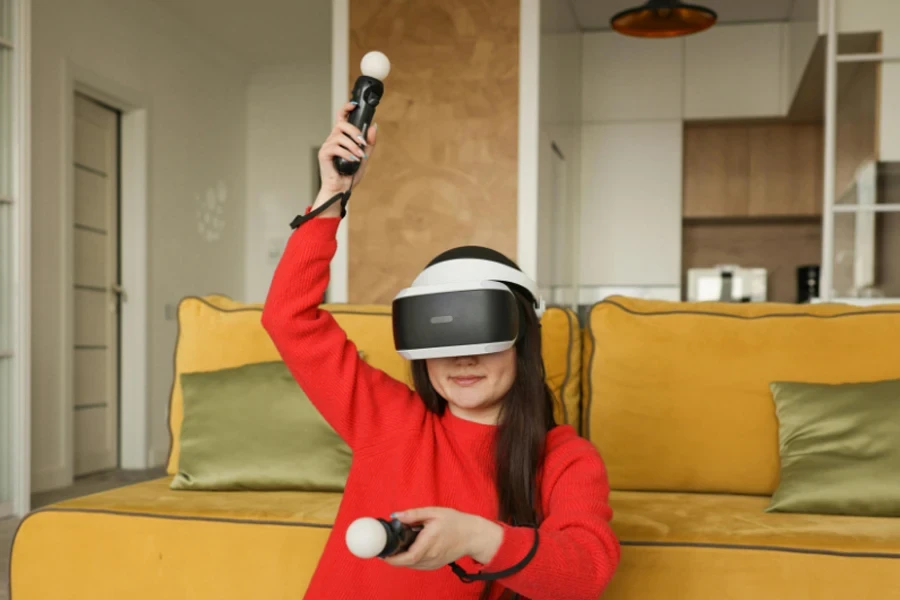
The applications of VR headsets have dramatically expanded, transcending beyond gaming to impact various professional sectors significantly. This broad spectrum of usage underscores the versatility of VR technology, highlighting its potential to revolutionize how individuals interact with digital environments across different contexts.
Gaming: The realm of gaming has been profoundly transformed by VR headsets, offering an unparalleled level of immersion that traditional gaming platforms struggle to match. VR gaming experiences are characterized by their ability to place the player directly within the game environment. This immersion is achieved through comprehensive spatial awareness and interactive gameplay mechanics enabled by VR technology. Players can navigate virtual worlds, interact with objects, and experience game narratives in a more engaging and tactile manner. The depth of immersion elevates the emotional and sensory impact of gaming, creating a more intense and personal experience. Standalone and tethered VR headsets both play crucial roles in this sector, with the former offering accessible and convenient gaming experiences, and the latter providing high-fidelity visuals and complex game mechanics that demand more powerful hardware.
Professional Use:
Training: VR’s application in training is particularly notable for its ability to simulate real-world scenarios within a controlled, risk-free virtual environment. Industries such as healthcare have leveraged VR to train surgeons, allowing them to practice procedures in a hyper-realistic setting without the ethical and practical risks associated with real-life training. Similarly, aviation and military sectors utilize VR for training pilots and soldiers, preparing them for various scenarios they might encounter in the field.
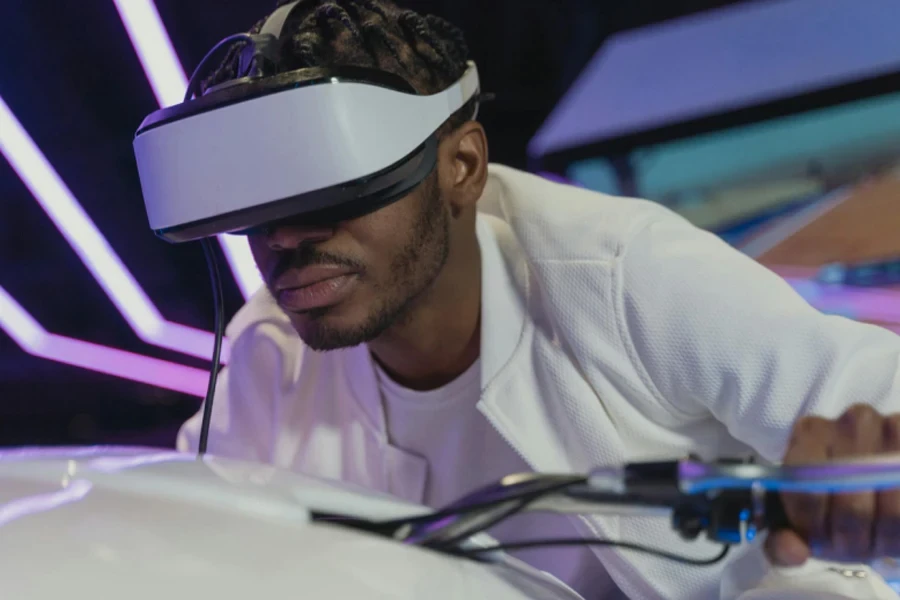
Education: In educational contexts, VR headsets serve as dynamic tools for enhancing learning and engagement. By transforming abstract concepts into interactive 3D experiences, VR helps students grasp complex subjects more intuitively. For example, history lessons can be brought to life through virtual time travel, while complex scientific principles can be explored in a hands-on manner, making learning both effective and enjoyable.
Design: The design sector benefits immensely from VR technology, offering professionals in architecture, engineering, and the arts a powerful medium for visualization and creativity. VR enables designers to construct and interact with their creations in a fully immersive 3D space, facilitating a deeper understanding of spatial relationships and design aesthetics. This capability not only streamlines the design process but also fosters collaborative projects by allowing teams to explore and refine designs collectively in a virtual space.
The continued evolution of VR technology promises to broaden its application and adoption across these and other sectors. Choosing between standalone and tethered headsets hinges on the specific needs and preferences of the user, whether it’s the simplicity and portability of standalone models or the high-performance immersive experiences offered by tethered devices.
Insights into the 2024 VR headset market
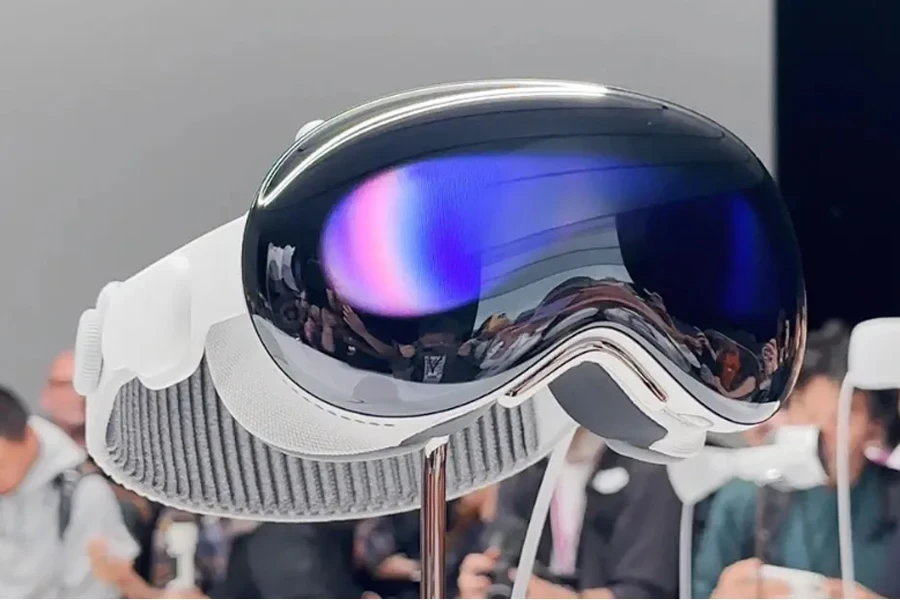
The landscape of VR technology is witnessing significant shifts, with the market for VR headsets in 2024 reflecting both burgeoning growth and evolving consumer demands. This section delves into the dynamics of market expansion and the technological innovations steering the industry forward.
Market growth and consumer demand
The VR headset market has seen a remarkable trajectory of growth, a trend that is anticipated to continue into 2024. With a market size valued at USD 15.20 billion in 2021, it’s projected to surge at a CAGR of 31.31% during the forecast period from 2023 to 2030, eventually reaching an estimated USD 134.32 billion.
Factors fueling this expansion include the increasing affordability of VR devices, a growing library of VR content, and consumer interest in immersive entertainment and educational experiences. The appeal of VR as a medium for gaming, professional training, and social interaction has broadened its market, drawing in a diverse range of users. Moreover, the global situation has accelerated the adoption of virtual technologies for remote work and learning, further propelling the demand for VR solutions. As businesses and educational institutions recognize the value of VR in enhancing engagement and facilitating innovative learning and training methodologies, the investment in VR technology is expected to surge, contributing to the market’s growth.
Technological innovations shaping the market
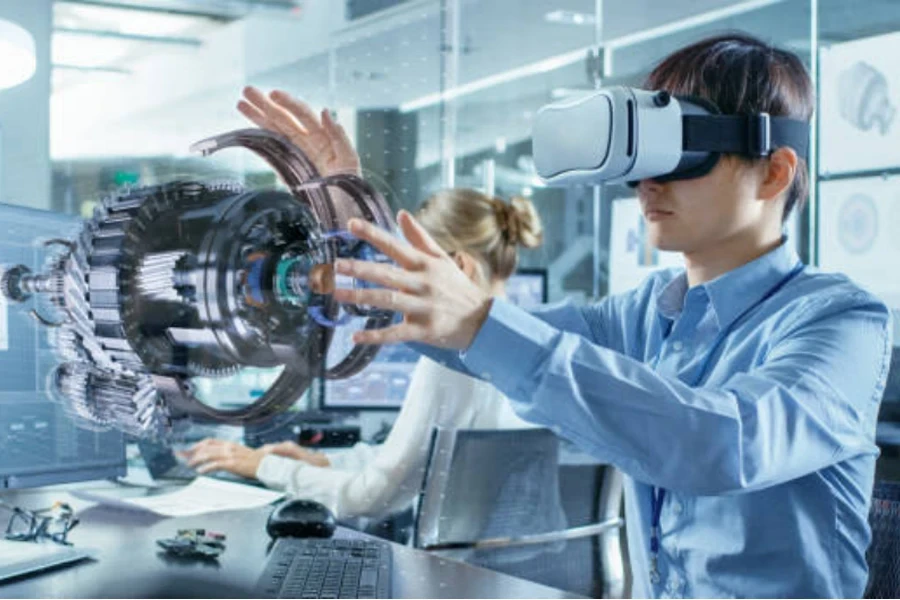
Technological advancements are significantly shaping the VR headset market, with developments in increased resolution, eye-tracking technology, and mixed reality capabilities leading the charge. These innovations are enhancing the user experience, offering more realistic and immersive virtual environments. The software segment, particularly involving Software Development Kits (SDK) and VR content creation tools, captures the largest market share in revenue, underpinning the importance of high-quality graphics and efficient functioning of VR technologies.
Meanwhile, hardware advancements, including sensors, displays, and position trackers, continue to evolve, driven by substantial investments from key industry players. The market is also witnessing a shift towards fully immersive technology, which, despite its higher cost, offers unmatched realism and is finding applications in VR simulators and theme parks. The consumer segment remains dominant, particularly for gaming and entertainment, yet the healthcare and education sectors are expected to see significant growth, reflecting VR’s expanding role in training and learning.
The evolution of the VR headset market in 2024 underscores a period of vibrant growth and innovation. As technological advancements continue to elevate the capabilities of VR headsets, the market is set to expand further, driven by diversified applications and increasing consumer adoption. The intersection of improved hardware, broader content ecosystems, and innovative features signifies a promising future for VR technology, marking 2024 as a year of significant opportunities and advancements in the realm of virtual reality.
Criteria for selecting VR headsets
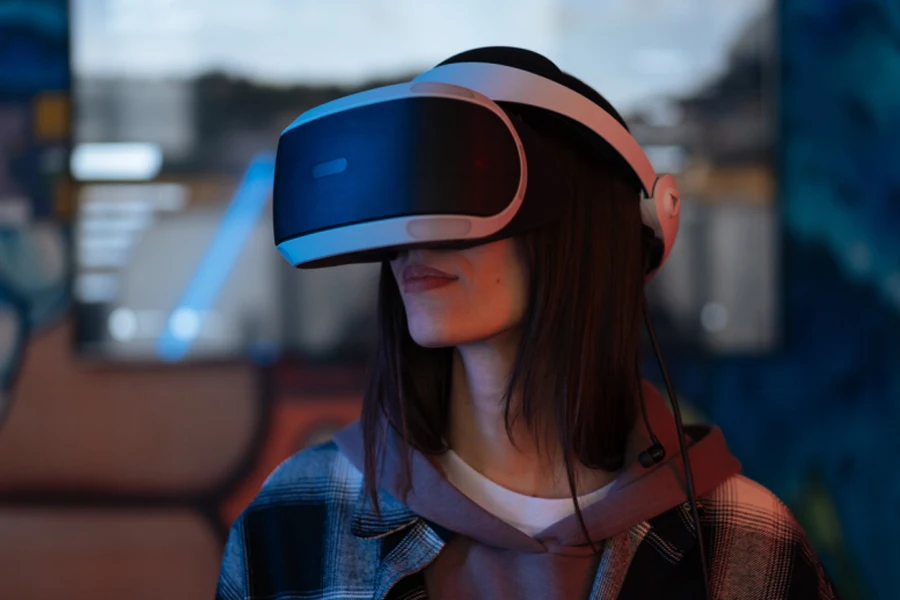
Selecting the right VR headset involves navigating through a maze of specifications and features. The process is akin to finding a piece of technology that not only fits the budget but also aligns with the intended use. Here, we dissect the crucial criteria to consider when choosing a VR headset.
Performance and visual fidelity
In the realm of virtual reality, the twin pillars of performance and visual fidelity define the quality and immersion of the experience.
Importance of Resolution: The resolution of a VR headset determines how detailed and crisp the virtual world appears to the observer. For instance, headsets like the HP Reverb G2 push the boundaries with a staggering resolution of 2160 x 2160 pixels per eye, offering near-photorealistic visuals that dramatically enhance the sense of presence within a virtual environment. On the other end, the Meta Quest 2, while offering a more modest 1832 x 1920 pixels per eye, still provides a clear and immersive experience that balances performance with accessibility.
Significance of Refresh Rate: The refresh rate, measured in Hertz (Hz), indicates how many times the display updates its image per second, directly impacting motion smoothness and the overall comfort of the experience. A higher refresh rate reduces the lag between head movement and display response, thereby minimizing motion sickness – a common concern in VR environments. The Valve Index stands out in this aspect, offering a refresh rate of up to 144 Hz, which is among the highest available in consumer VR headsets. This ensures that fast-paced games and simulations feel fluid and responsive, significantly improving the user’s immersion and interaction within the virtual space.
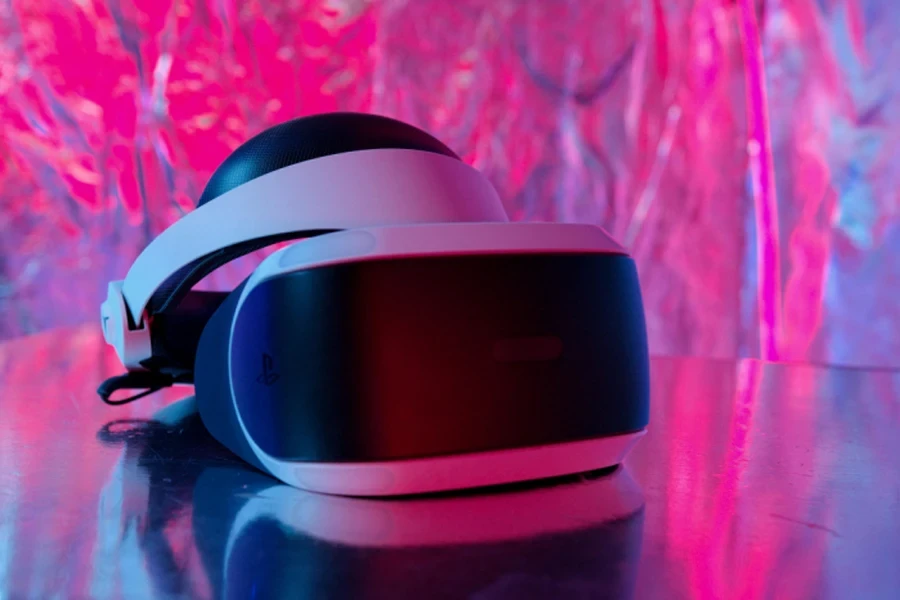
Balancing Technical Specifications with Hardware Requirements: These technical specifications do not exist in a vacuum; they require support from compatible hardware. For tethered headsets, this means a sufficiently powerful PC or gaming console. The performance of standalone headsets, on the other hand, is contingent upon their internal hardware, balancing the demands of high-resolution displays and high refresh rates with battery life and device weight.
Consideration of User Priorities: When evaluating VR headsets on these criteria, potential buyers must consider the type of experiences they prioritize. High-fidelity simulations for professional training or design might necessitate the visual clarity and responsiveness offered by devices like the HP Reverb G2 or Valve Index. Conversely, casual gaming or media consumption might not require the cutting edge, making the Meta Quest 2 a compelling option that offers a balance between visual quality, performance, and cost.
The quest for the perfect VR headset hinges on understanding how performance and visual fidelity impact user experience. With advancements in display technology and processing power, the bar for what’s considered immersive continues to rise, challenging manufacturers and delighting users with ever more lifelike virtual realms.
Comfort and design
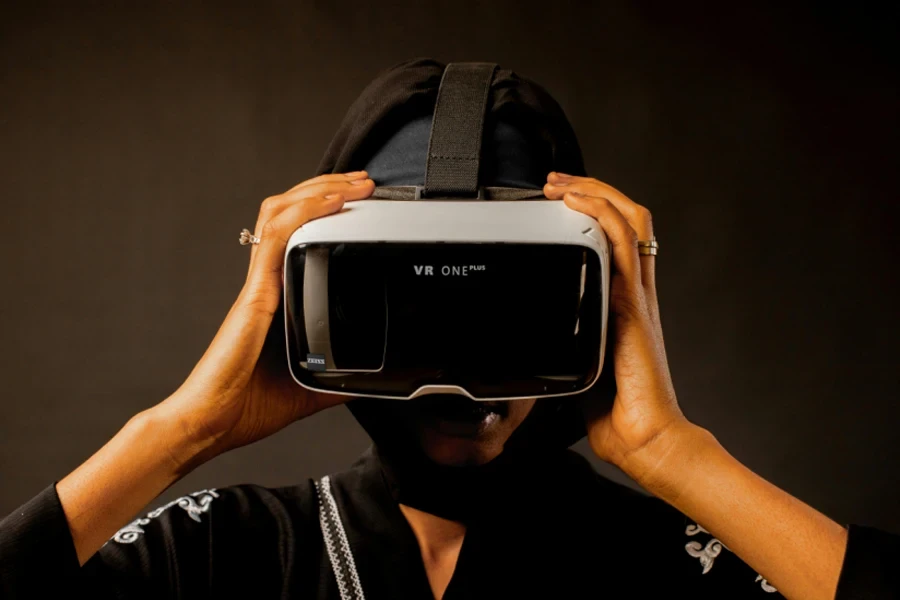
The ergonomic design of VR headsets is a critical factor that directly impacts user satisfaction and the overall virtual reality experience. A well-designed headset should accommodate extended use without causing discomfort, which involves several key design considerations.
Weight Distribution and Adjustability: A headset’s weight and how it’s distributed across the head can significantly affect comfort. For instance, the Meta Quest 2 is designed with a lightweight structure and adjustable head straps, allowing for a customized fit that evenly distributes weight, reducing pressure on any single point on the user’s head. This adjustability is crucial for accommodating a wide range of users with different head sizes and shapes, ensuring that everyone can achieve a comfortable fit.
Breathability and Padding: The materials used in the headset’s construction, especially around areas in contact with the face and forehead, are essential for comfort during prolonged sessions. High-quality, breathable materials that prevent excessive heat and moisture buildup are preferable. The HP Reverb G2, for example, features a face gasket that can be removed and replaced, allowing for easy cleaning and enhancing the comfort and hygiene of the device. The use of memory foam or similar materials can also enhance comfort by conforming to the user’s face, providing both a secure fit and cushioning.
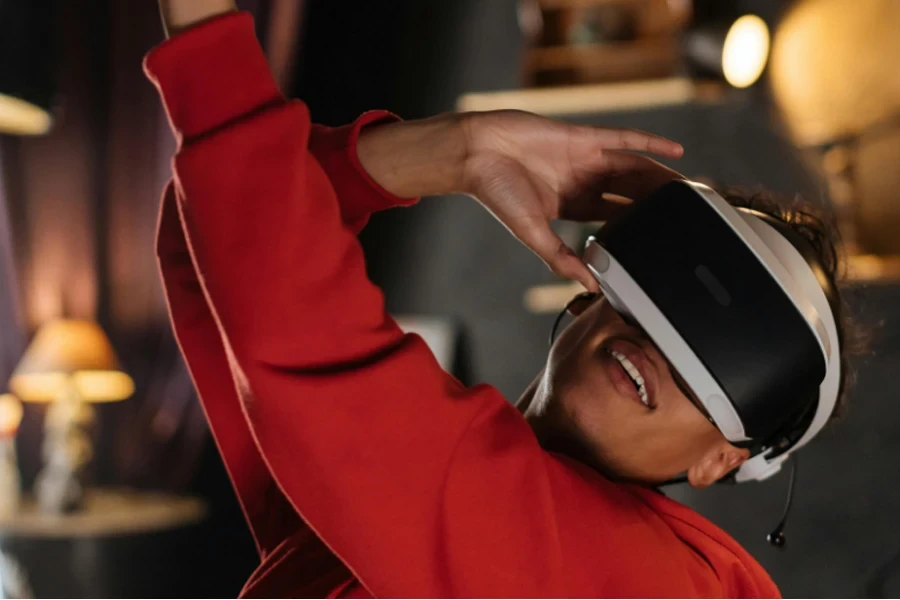
Adjustable IPD and Focus: Interpupillary Distance (IPD) adjustment is another significant feature affecting comfort and visual clarity. IPD adjustment allows users to align the headset’s lenses with their eyes’ unique spacing, optimizing visual quality and reducing eye strain. The Valve Index goes a step further by incorporating both IPD and lens-to-eye distance adjustment, enabling users to fine-tune the visual experience to their personal needs.
Integration with Prescription Glasses: For users who wear prescription glasses, the ability to use them comfortably with a VR headset is a significant concern. Some headsets are designed with extra space to accommodate glasses, while others offer prescription lens inserts as an accessory. This consideration ensures that users do not have to compromise on visual clarity or comfort while immersed in virtual environments.
When evaluating VR headsets, the aspects of comfort and design are as critical as technical specifications like resolution and refresh rate. A headset that excels in ergonomic design can greatly enhance the user experience, making virtual reality more accessible and enjoyable for extended periods. Features such as weight distribution, breathability, IPD adjustment, and accommodation for prescription glasses play pivotal roles in this regard, contributing to a comfortable and immersive VR experience.
Compatibility and content availability
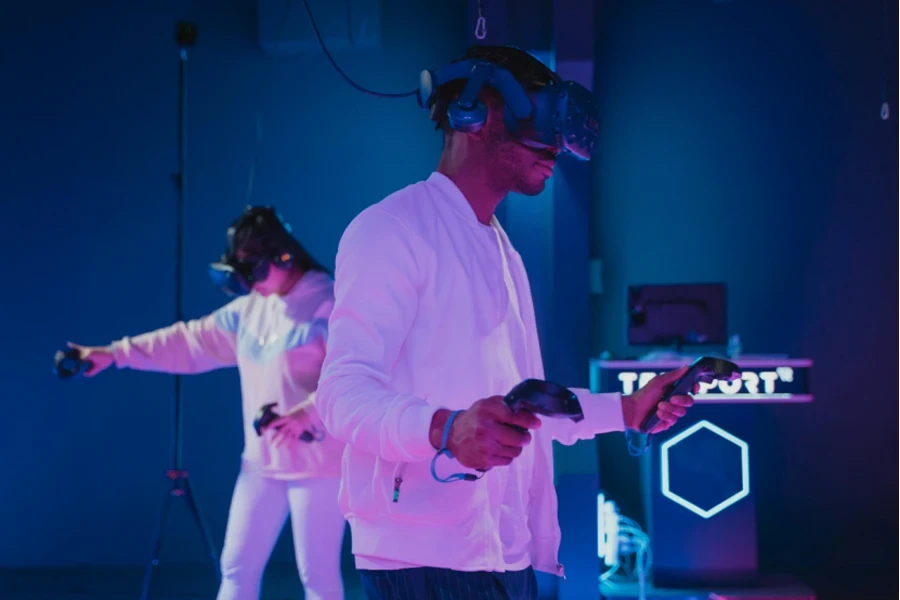
When selecting a VR headset, understanding its compatibility with existing ecosystems and the breadth of available content is crucial. This aspect significantly influences the value and utility of the device, affecting its appeal to different user segments.
Ecosystem Compatibility: A headset’s compatibility with various gaming consoles, PCs, and operating systems dictates its accessibility and potential user base. For example, the PlayStation VR2 is designed specifically for use with the PlayStation 5 console, offering a seamless integration that leverages the console’s hardware capabilities to deliver exclusive, high-quality VR experiences. On the other hand, headsets like the Valve Index require a connection to a high-performance PC, utilizing the SteamVR platform to access a vast library of VR games and applications. This requirement underscores the importance of matching the headset with the user’s existing hardware and preferred gaming or professional platforms.
Content Library: The value of a VR headset is also defined by the richness of its content library. A wide range of available games, educational tools, and professional applications can significantly enhance the headset’s appeal. For instance, Meta Quest 2’s standalone design is complemented by an extensive library of content that spans various genres and uses, from immersive gaming experiences to virtual meetings and fitness applications. This diversity ensures that users can find content that matches their interests and needs, making the headset a versatile tool for both entertainment and productivity.
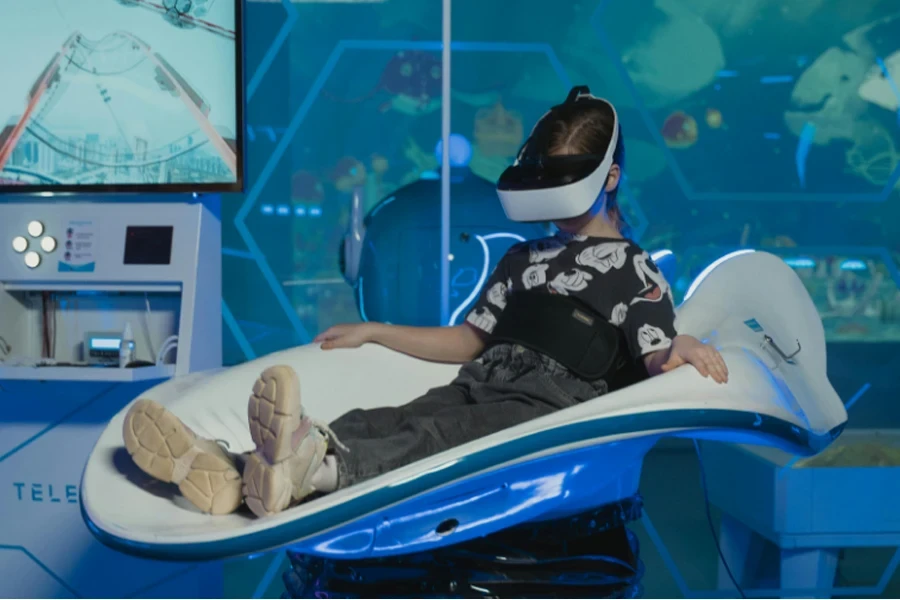
Software Development and Support: Beyond immediate content availability, potential buyers should consider the level of ongoing software development and support. Platforms that actively encourage and support developers in creating new and innovative content will likely see their libraries grow, offering users an expanding universe of VR experiences. The compatibility with content creation tools and SDKs (Software Development Kits) also plays a role, especially for professional users who may wish to develop bespoke VR applications for specific use cases.
Marketplace and User Community: Finally, the presence of a vibrant marketplace and user community around a VR headset can enhance content discoverability and foster a culture of innovation and feedback. Platforms that facilitate easy access to new titles and encourage community engagement through reviews and recommendations help users navigate the vast array of content, ensuring they can maximize the value of their VR headset.
Assessing a VR headset’s compatibility with existing hardware and the diversity of its content ecosystem is imperative. This assessment helps ensure that the chosen device aligns with the user’s preferences and requirements, whether for gaming, education, or professional applications. By considering these factors, buyers can select a VR headset that offers both immediate enjoyment and long-term value through continuous access to new and engaging content.
Price vs. value
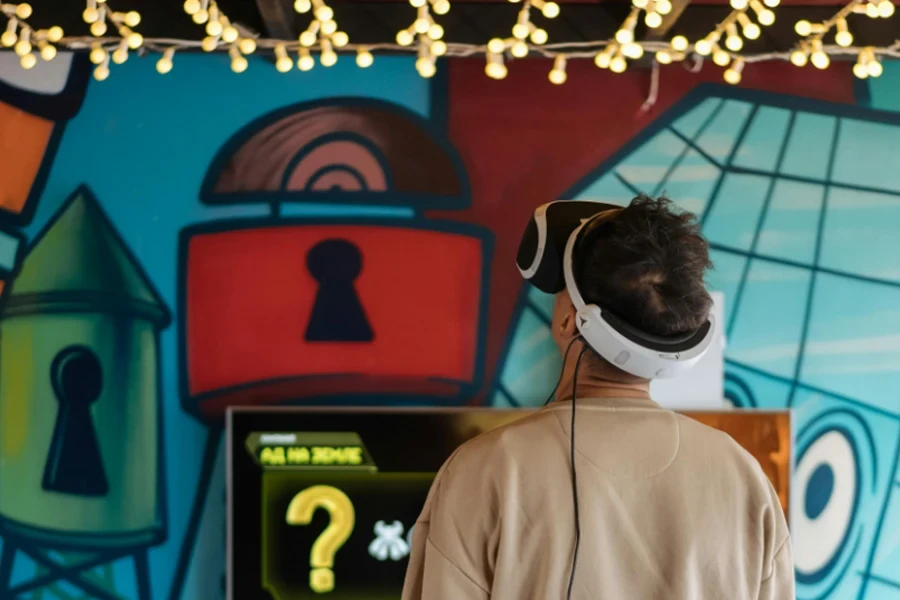
When evaluating the cost of a VR headset, it’s essential to consider the value it offers in relation to its price. This evaluation encompasses not only the hardware’s specifications but also the breadth of its content library, ecosystem support, and future-proofing features.
For instance, the Meta Quest 2 presents a compelling price-to-value ratio, offering robust performance, a wide array of content, and wireless freedom at a relatively affordable price point. This balance makes it an attractive option for both VR enthusiasts and newcomers. On the higher end of the spectrum, headsets like the HTC Vive Pro 2 and Valve Index justify their premium pricing with superior visual fidelity, expansive content ecosystems, and advanced tracking and input technologies.
With options ranging from the affordable Meta Quest 2 at $300, catering to newcomers seeking entry-level immersion, to the high-end Apple Vision Pro at $3,500, designed for users demanding the pinnacle of AR/VR technology, there is a VR headset for every budget and application. This price variance is critical for users during product selection, as it allows them to balance their financial considerations against the desired features, performance, and use cases.
The concept of value also extends to future-proofing and the headset’s ability to adapt to upcoming technological advancements. Devices that support modular upgrades, such as the ability to swap out older components for newer, more advanced ones, offer a pathway for keeping pace with the rapidly evolving VR landscape without necessitating the purchase of an entirely new headset.
In sum, selecting a VR headset is a multifaceted decision that involves juggling various aspects, from technical specifications to ergonomic design and overall value. Understanding these criteria allows buyers to make informed choices that align with their needs, ensuring a satisfying plunge into the world of virtual reality.
Spotlight on leading VR headset models of 2024
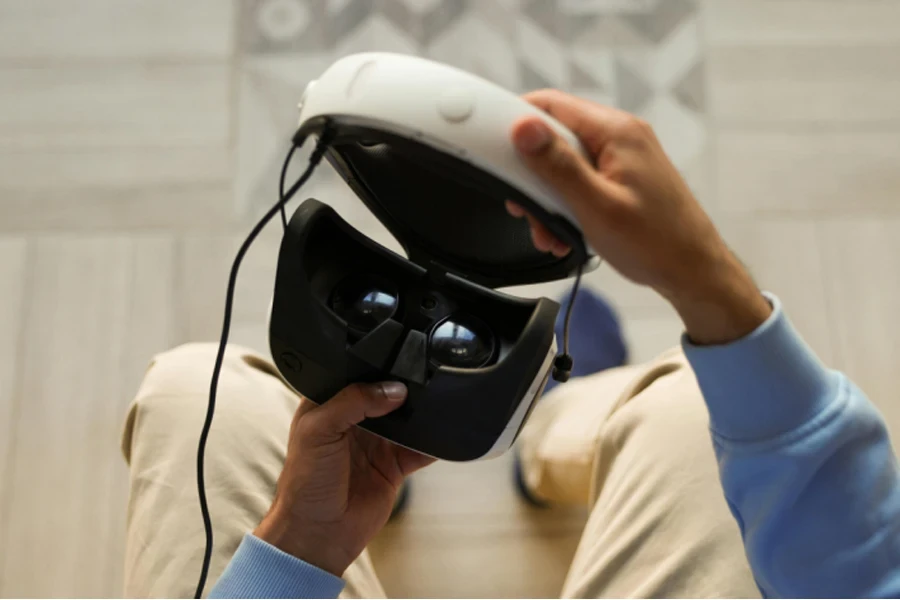
The year 2024 has seen remarkable innovations in the VR headset market, with each leading model carving out its niche through unique features and user experiences. Here’s a closer look at three standout models that have captured the attention of both enthusiasts and professionals alike.
Meta Quest 3: The standalone sensation
The Meta Quest 3 stands as a revolutionary leap forward in the standalone VR headset market, delivering an unparalleled blend of virtual and mixed reality experiences at an accessible price point. With its cutting-edge Snapdragon XR2 Gen 2 processor, the Quest 3 not only offers improved graphics and a higher-resolution display than its predecessor but also introduces color pass-through cameras. These cameras enable augmented reality applications, allowing users to seamlessly blend digital content with the real world. The device boasts a resolution of 2,064 by 2,208 pixels per eye, ensuring crisp and immersive visuals across a wide array of VR experiences, from gaming to productivity apps. Furthermore, its wireless design and intuitive control scheme, including hand tracking, underscore its user-friendly nature, making advanced VR technology more accessible to a broader audience.
The Quest 3’s emphasis on mixed reality, coupled with its robust library of apps and games, positions it as a versatile choice for consumers seeking both entertainment and practical utility in a VR device. Its commitment to offering a high-quality mixed reality experience at a relatively affordable price point ($500) represents Meta’s ambition to make immersive digital experiences part of everyday life. While the headset’s battery life remains a point of improvement, the overall package of the Quest 3 — including its comfort, ease of use, and the sheer breadth of experiences available — makes it an attractive option for those looking to explore the possibilities of VR without being tethered to a PC or constrained by a limited app ecosystem. The Meta Quest 3 not only serves as a gateway to virtual worlds but also as a tool for enhancing real-world interactions, highlighting the potential of VR to transform both how we play and how we work.
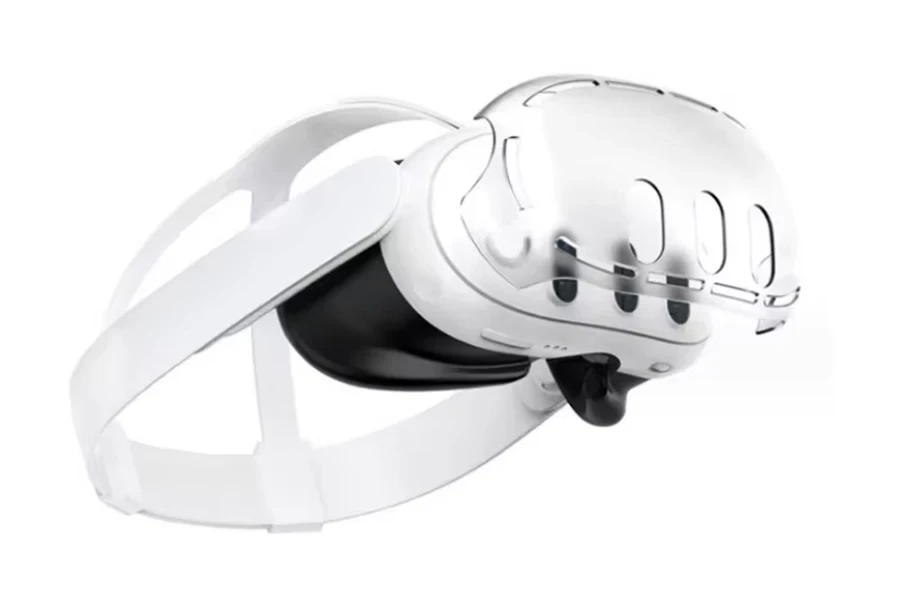
Apple Vision Pro: The premium mixed reality experience
The Apple Vision Pro represents a significant milestone in the AR/VR landscape, introducing a high-end mixed reality headset that Apple prefers to describe as a “spatial computer.” Priced at $3,500, it’s aimed at a premium segment of the market, offering an unrivaled AR/VR interface that leverages eye and hand tracking for a more intuitive and natural user experience. The Vision Pro’s hardware is among the best seen in consumer headsets, featuring a staggering resolution of 22 million pixels across its display, providing sharp, vibrant visuals that bring virtual content to life like never before. Its reliance on VisionOS offers a seamless integration of familiar iOS services and apps, expanding the functionality of the device beyond mere entertainment to include productivity and creative applications.
However, the Vision Pro’s ambitious technology comes with a steep price, making it a significant investment for consumers. Its innovative control scheme eliminates the need for physical controllers, offering a futuristic interaction model that could redefine user expectations for digital interfaces. Despite its impressive capabilities, the Vision Pro’s adoption may initially be limited by its cost and the readiness of the market to embrace such advanced mixed reality experiences. Yet, for those with the means to afford it, the Vision Pro offers a glimpse into the future of computing, where the boundaries between digital and physical realms blur, creating a seamless, immersive environment for work, play, and exploration. The device’s potential to evolve and expand its app ecosystem promises to further enhance its value over time, making it a worthy consideration for tech enthusiasts and professionals alike.
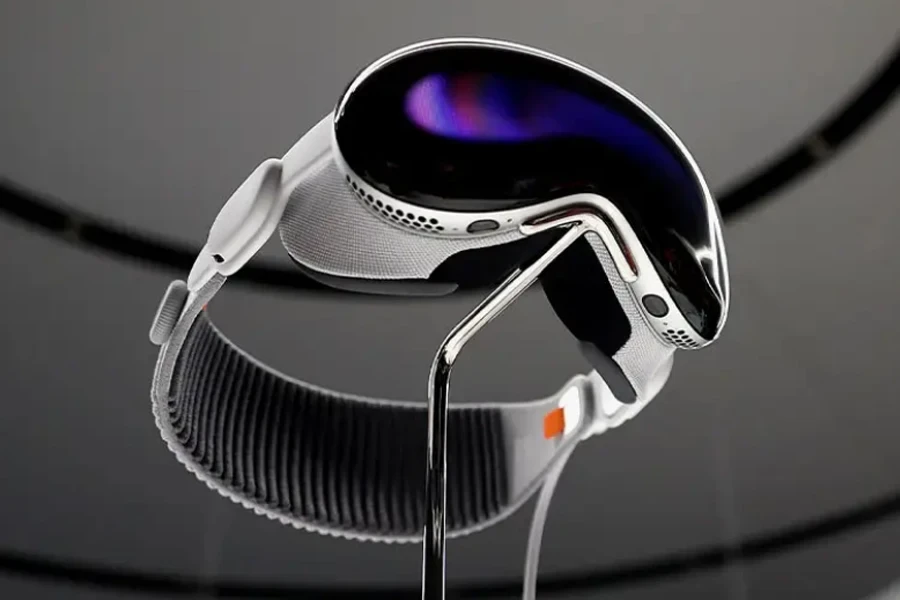
Sony PlayStation VR2: Gaming excellence on PS5
Sony’s PlayStation VR2 ushers in a new era for console-based virtual reality, providing PlayStation 5 owners with an immersive and highly advanced VR gaming experience. With its OLED display offering a resolution of 2,000 by 2,040 pixels per eye, the PS VR2 delivers exceptionally vivid and detailed visuals that significantly enhance player immersion. This, combined with the headset’s incorporation of eye-tracking technology, brings a new level of realism and interactivity to VR gaming. Priced at nearly $600, the PS VR2 represents a substantial investment but justifies its cost through cutting-edge features and a robust launch library, including exclusive titles like “Horizon: Call of the Mountain” that showcase the console’s power and the headset’s capabilities.
Notably, the PS VR2’s design emphasizes comfort and ease of setup, making it an attractive option for gamers seeking to explore virtual realms without the complexity often associated with high-end VR systems. While it lacks backward compatibility with original PlayStation VR games, this limitation is offset by its forward-looking tech and the promise of a growing library of VR content optimized for the latest hardware. The PlayStation VR2 not only enriches the PS5 gaming ecosystem but also sets a new standard for console-based virtual reality experiences, blending high-quality graphics, innovative controls, and user-friendly design to create a compelling package for enthusiasts and newcomers to VR gaming alike.
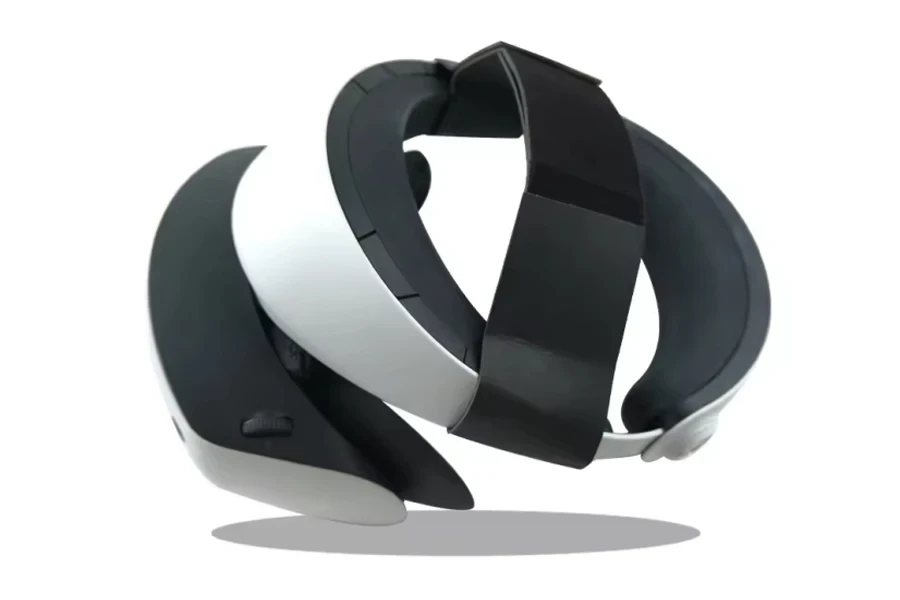
Additional top-sellers to look
Valve Index VR Kit: The Valve Index VR Kit stands out in the realm of virtual reality with its premium approach to immersive experiences, particularly through its innovative controller design that tracks individual finger movements, offering an unprecedented level of interaction and presence in VR. With a high refresh rate of 120Hz and a resolution of 1600×1440 per eye, it delivers smooth and crisp visuals, enhancing the realism of virtual environments. Although it comes at a higher price point, its integration with SteamVR provides access to an extensive library of content, making it a compelling choice for enthusiasts seeking the most immersive PC-based VR experience.
HTC Vive Pro 2: The HTC Vive Pro 2 pushes the boundaries of visual fidelity in virtual reality with its impressive 2448×2448 pixels per eye resolution, offering unmatched clarity and detail that brings virtual worlds to life like never before. Designed for both enthusiasts and professionals, it supports a wide field of view and a 120Hz refresh rate, ensuring immersive and comfortable VR experiences across a range of applications. While its high cost and requirement for additional base stations and controllers may pose a barrier to some, the Vive Pro 2 represents the pinnacle of current VR technology for those willing to invest in the best quality experience.
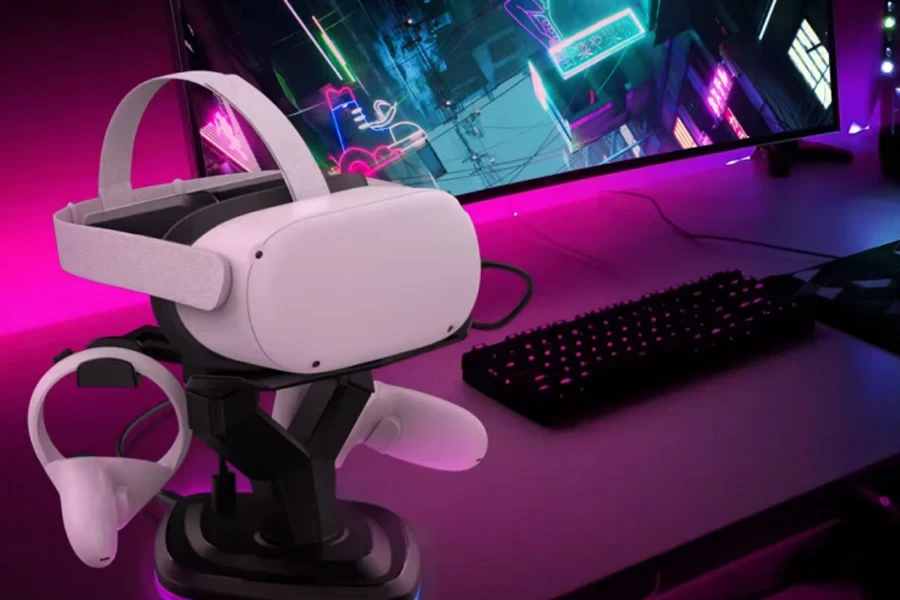
HP Reverb G2: HP’s Reverb G2 marks a significant step forward in the VR headset market, combining high-resolution displays with user-friendly design features to cater to both gamers and professionals. With a resolution of 2160×2160 per eye and refined audio by Valve, it provides a deeply immersive experience that doesn’t compromise on comfort, thanks to its adjustable straps and spacious face gasket. The Reverb G2’s compatibility with both Windows Mixed Reality and SteamVR platforms ensures a broad selection of content, making it a versatile and attractive option for users looking for a high-quality VR experience without the need for external tracking hardware.
Pico Neo 3 Link: The Pico Neo 3 Link carves out its niche in the standalone VR headset market with a focus on delivering a high-quality, cable-free VR experience that doesn’t shy away from competing with more established brands. Featuring a Snapdragon XR2 platform and a resolution of 1832×1920 pixels per eye, it offers a solid balance between performance and portability. The headset’s compatibility with SteamVR, when connected to a PC, expands its content library, providing users with the flexibility to explore a wide range of virtual experiences. Its competitive pricing and emphasis on user-friendly design make the Pico Neo 3 Link an appealing choice for those seeking a versatile VR solution.
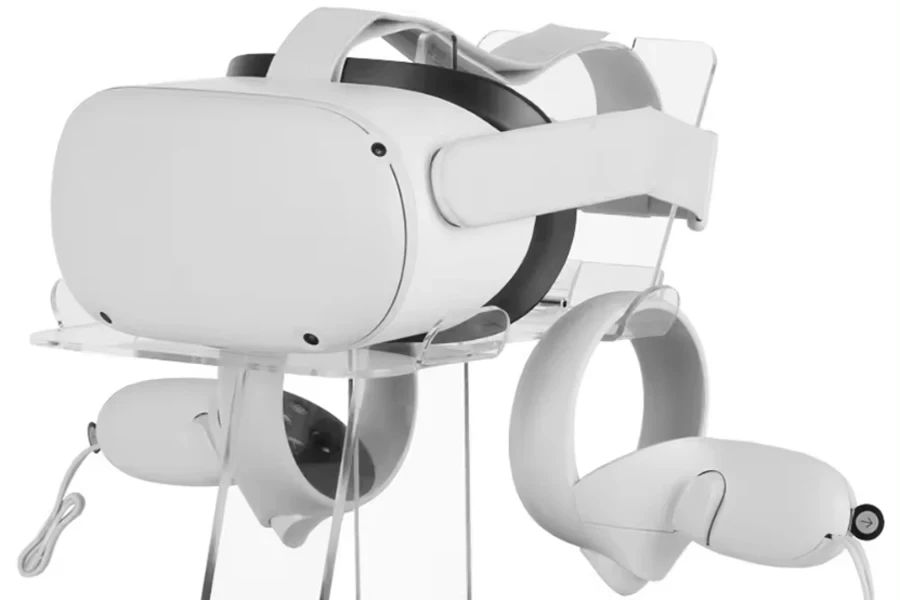
Each of these models highlights the diverse approaches to VR technology in 2024, catering to different preferences and use cases. Whether users prioritize mobility, integration with existing ecosystems, or the highest fidelity in gaming experiences, the VR headset market offers options that align with their specific needs, pushing the boundaries of what’s possible in virtual reality.
Conclusion
Selecting the right VR headset in 2024 involves a careful consideration of performance, comfort, compatibility, and value, alongside an understanding of the evolving market trends. With options ranging from the immersive Meta Quest 3 and the high-end Apple Vision Pro, to the gaming-centric Sony PlayStation VR2, the market caters to diverse needs and preferences. For businesses and individuals alike, aligning the choice of VR headset with specific requirements and future trends ensures not only an optimal virtual experience but also a wise investment in technology that continues to shape our digital and real-world interactions.




